Interesting, the answer turns out to be both O(1) and O(n). The timing depends not so much on the length of the list, as the length of the list before the named element you want is obtained.
Let's define some lists of different lengths:
library(microbenchmark)
makelist <- function(n){
L <- as.list(runif(n))
names(L) <- paste0("Element", 1:n)
return(L)
}
L100 <- makelist(100)
L1000 <- makelist(1000)
LMillion <- makelist(10^6)
L10Million <- makelist(10^7)
If we try to extract the element named Element100 our of each of these - the 100th element - it takes basically the same length of time:
microbenchmark(
L10Million[["Element100"]],
LMillion[["Element100"]],
L1000[["Element100"]],
L100[["Element100"]]
)
Unit: nanoseconds
expr min lq mean median uq max neval cld
L10Million[["Element100"]] 791 791 996.59 792 1186 2766 100 a
LMillion[["Element100"]] 791 791 1000.56 989 1186 1976 100 a
L1000[["Element100"]] 791 791 1474.64 792 1186 28050 100 a
L100[["Element100"]] 791 791 1352.21 792 1186 17779 100 a
But if we try to get the last element, the time required is O(n)
microbenchmark(
L10Million[["Element10000000"]],
LMillion[["Element1000000"]],
L1000[["Element1000"]],
L100[["Element100"]]
)
Unit: nanoseconds
expr min lq mean median uq max neval cld
L10Million[["Element10000000"]] 154965791 165074635 172399030.13 169602043 175170244 235525230 100 c
LMillion[["Element1000000"]] 15362773 16540057 17379942.70 16967712 17734922 22361689 100 b
L1000[["Element1000"]] 9482 10668 17770.94 16594 20544 67557 100 a
L100[["Element100"]] 791 1186 3995.15 3556 6322 24100 100 a
library(ggplot2)
library(dplyr)
res <- data.frame(x = c(100, 1000, 10^6, 10^7),
y = c(3556, 16594, 16967715, 169602041))
ggplot(res, aes(x = x, y = y ))+
geom_smooth(method = "lm") +
geom_point(, size = 3) +
scale_x_log10() +
scale_y_log10()

